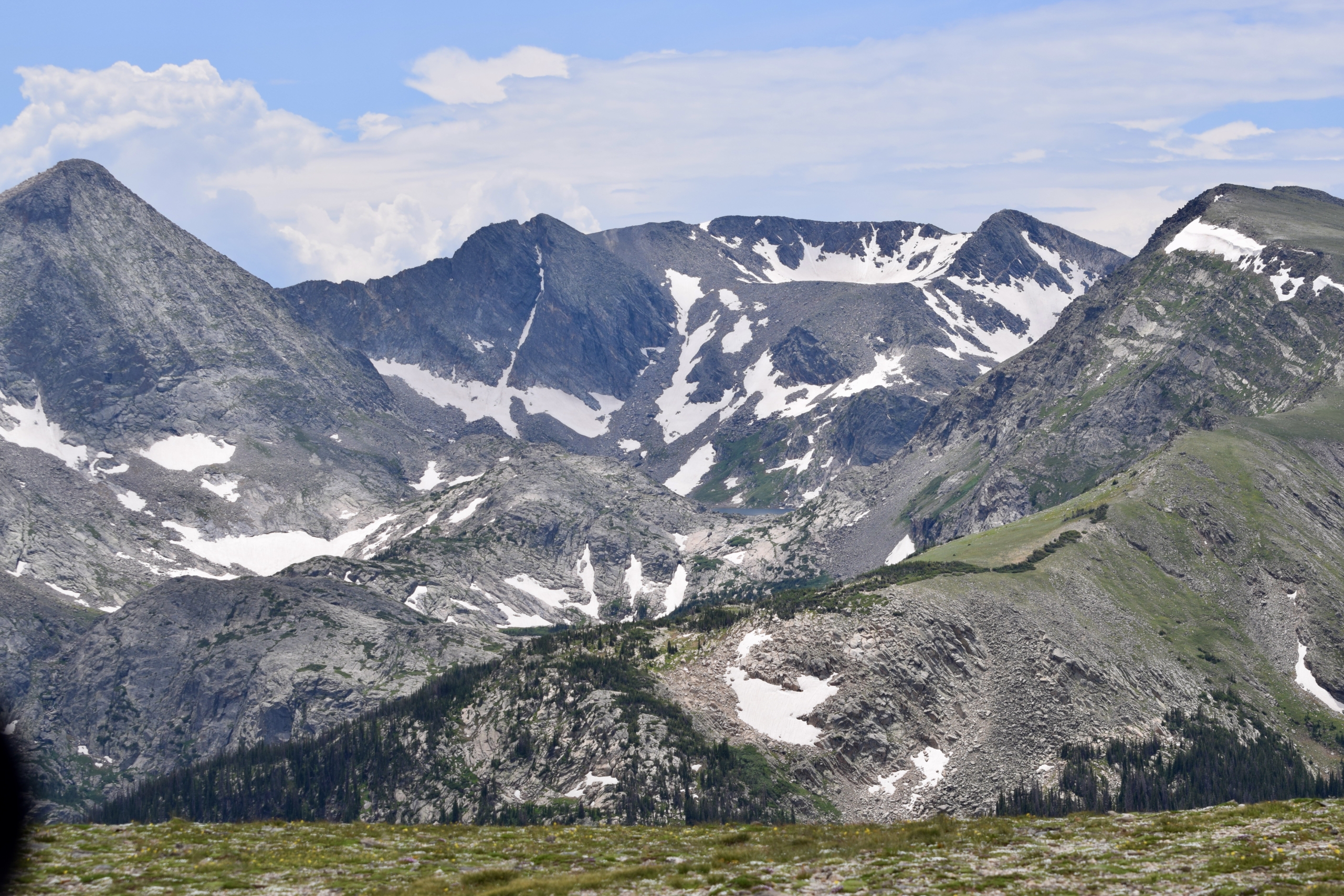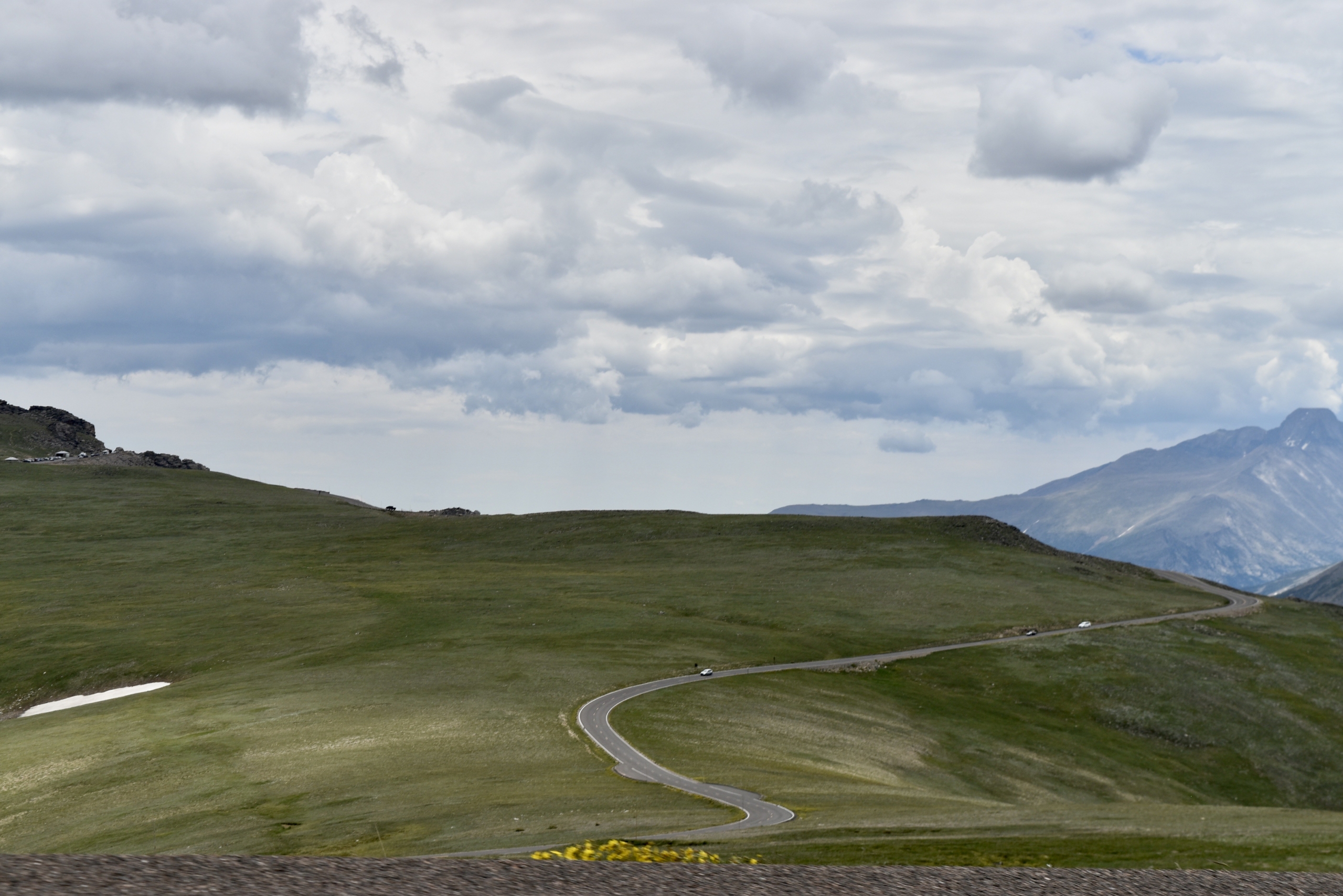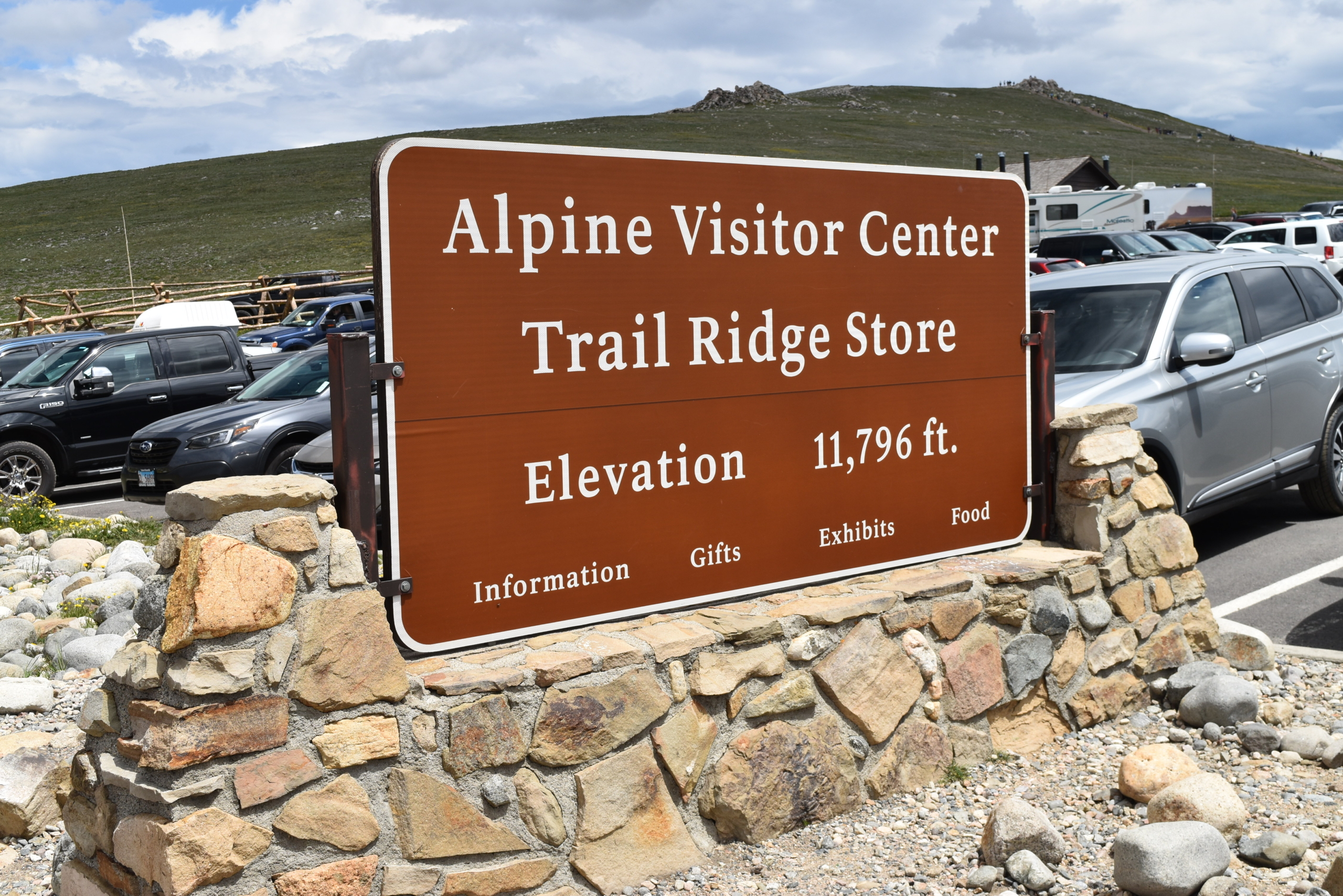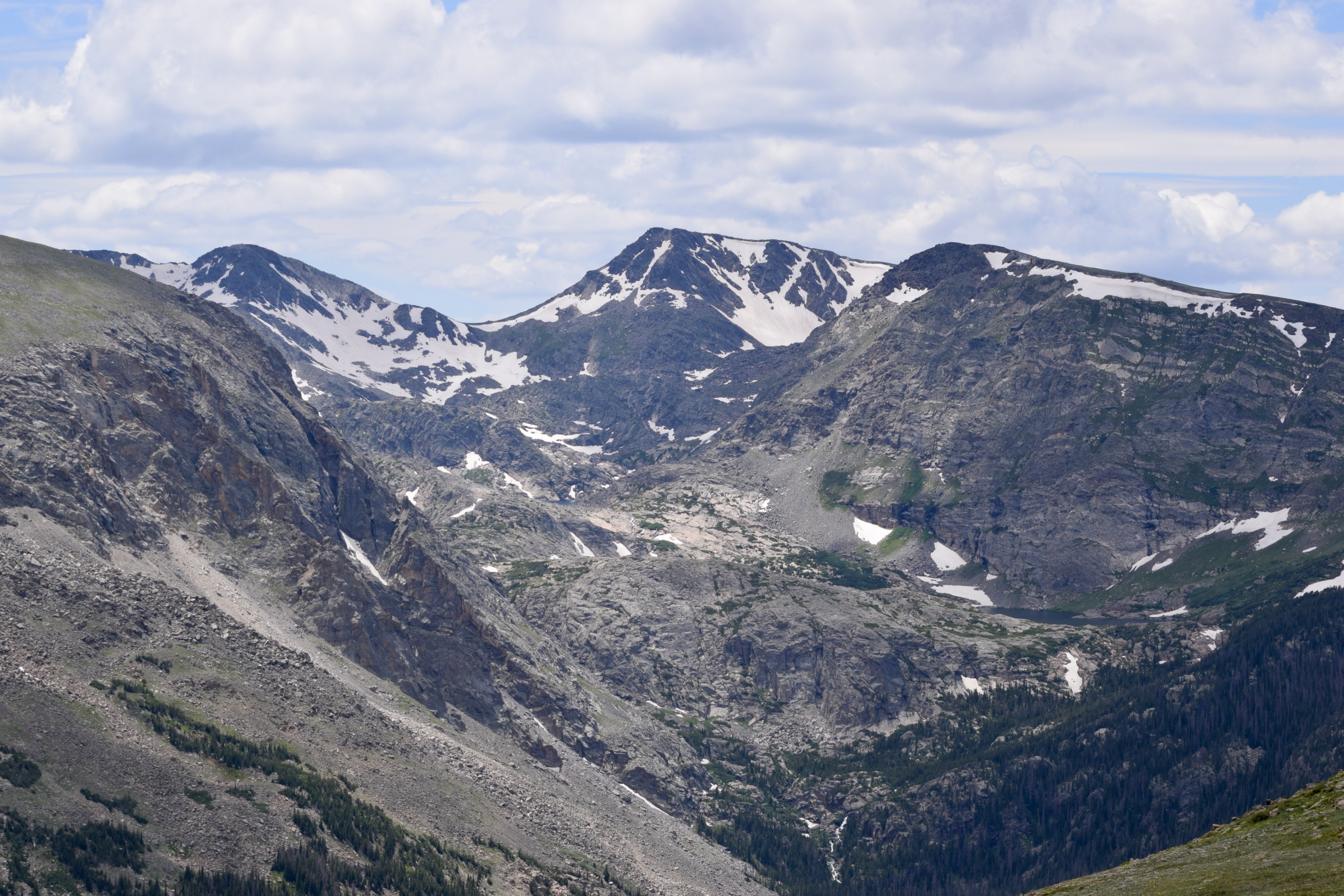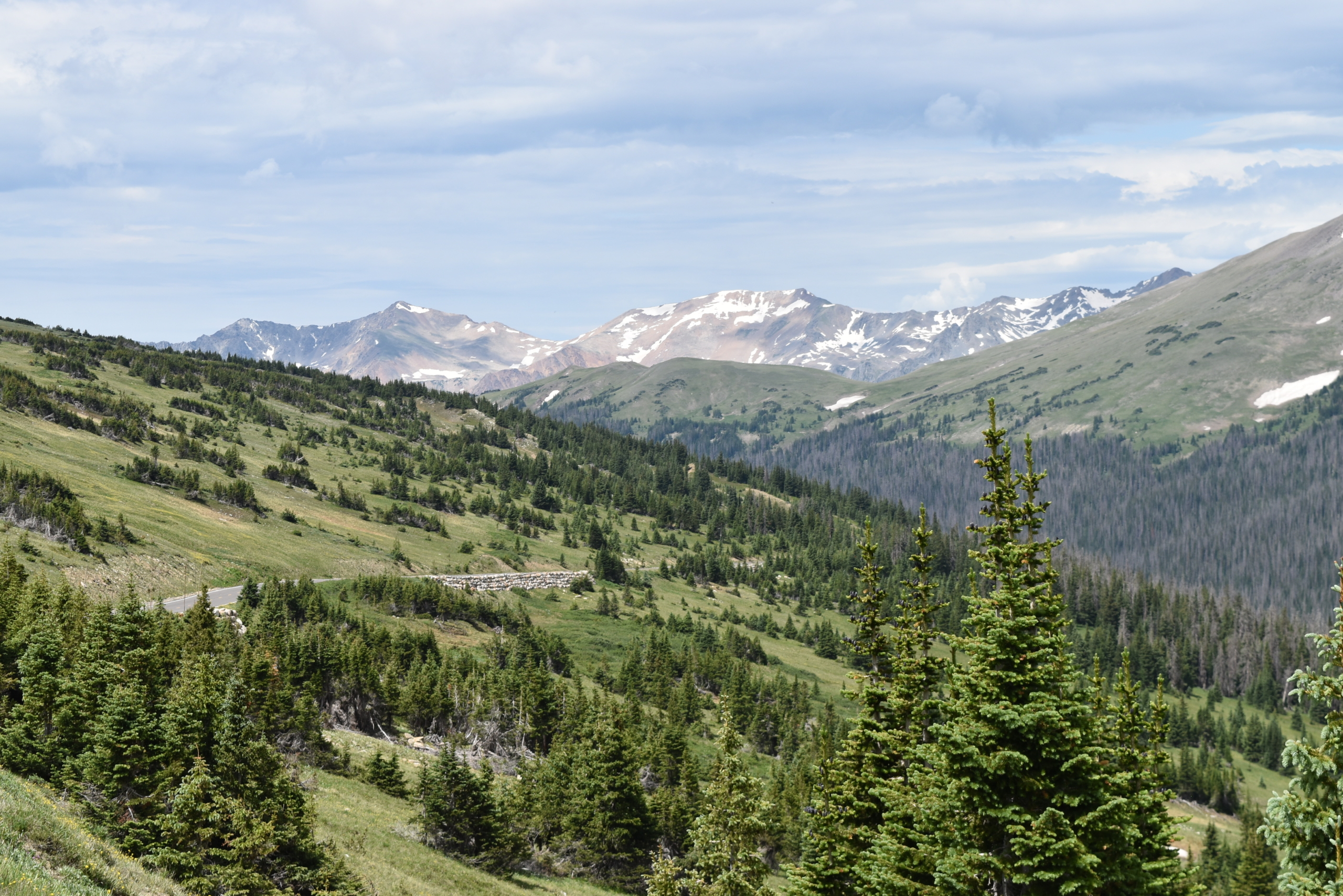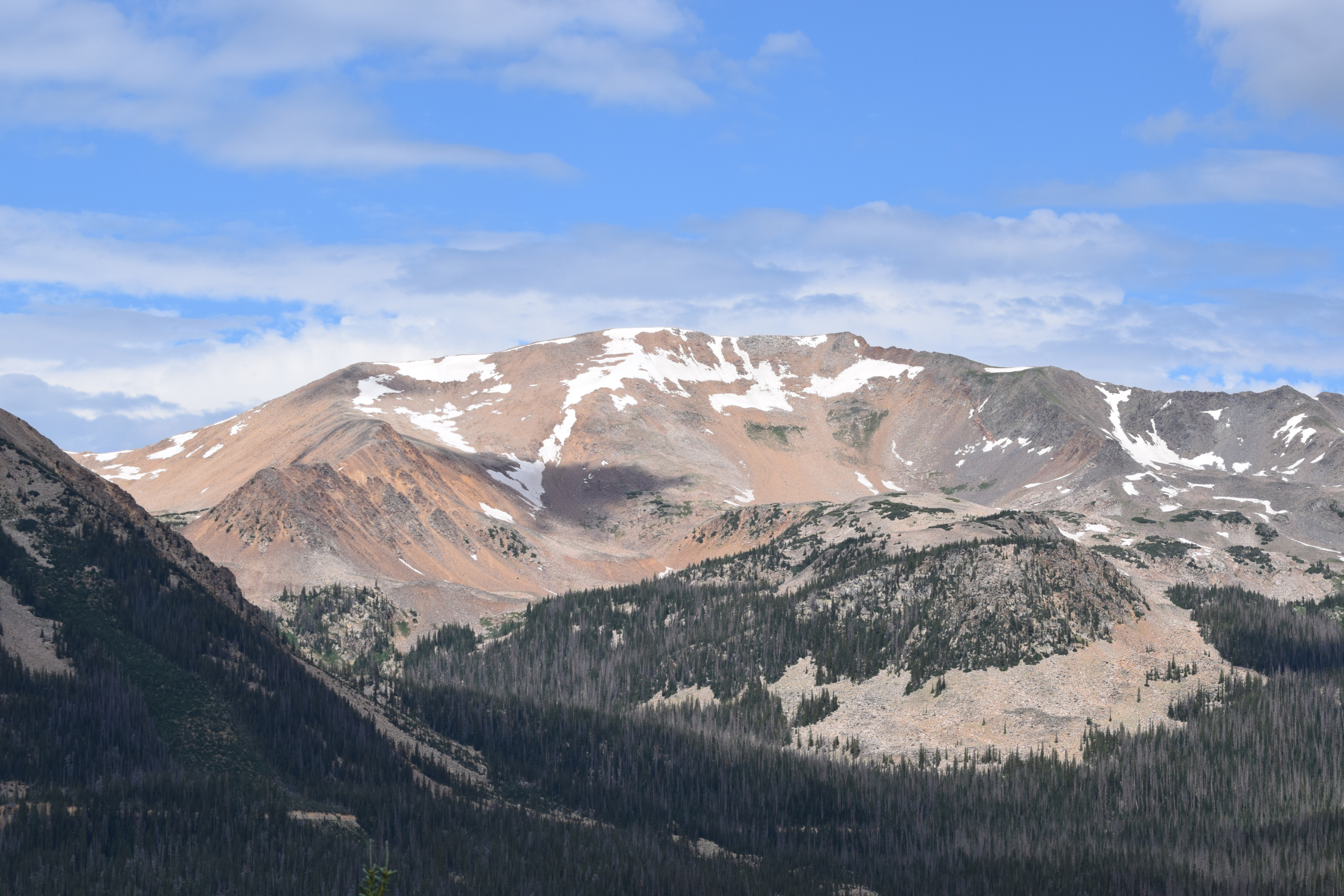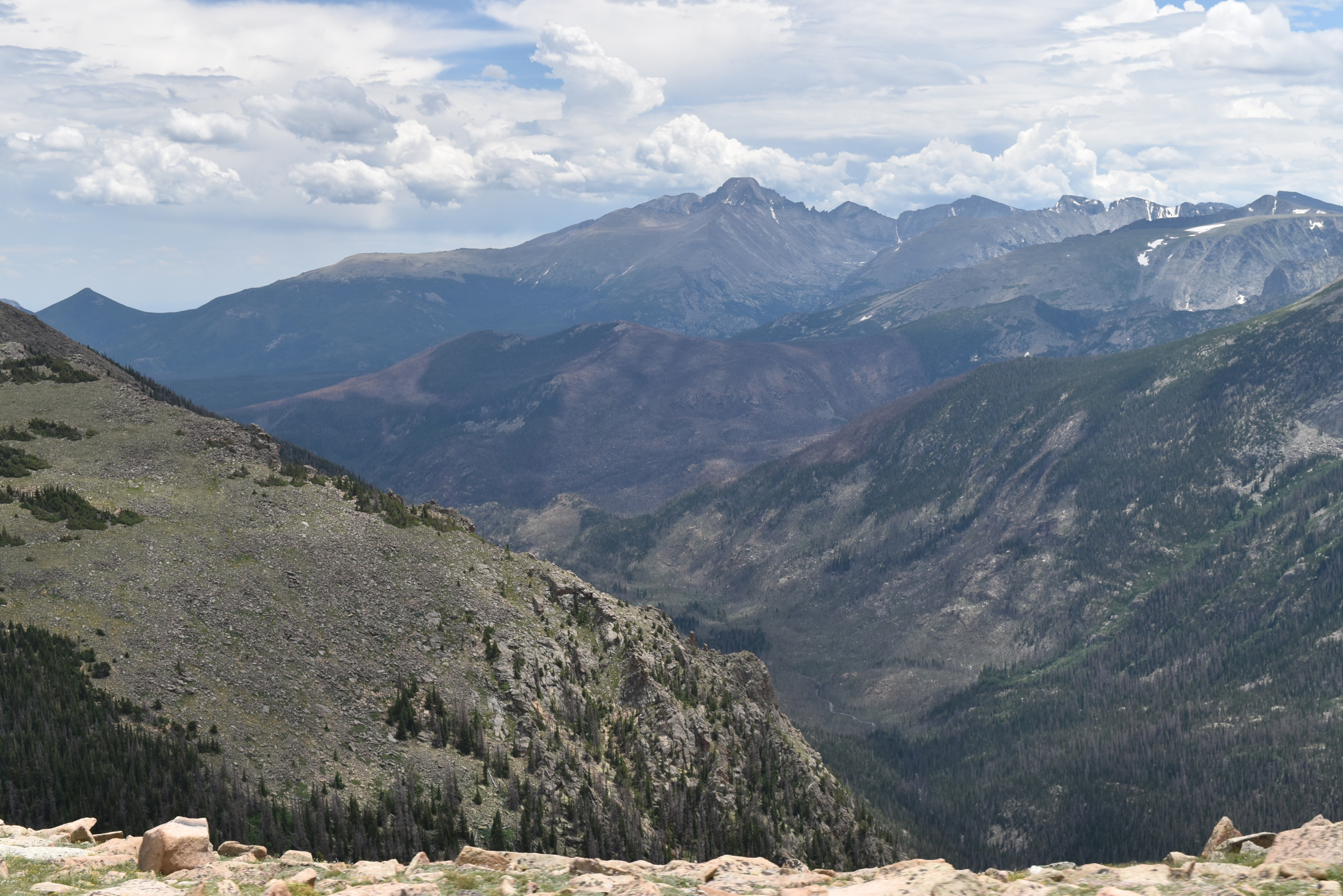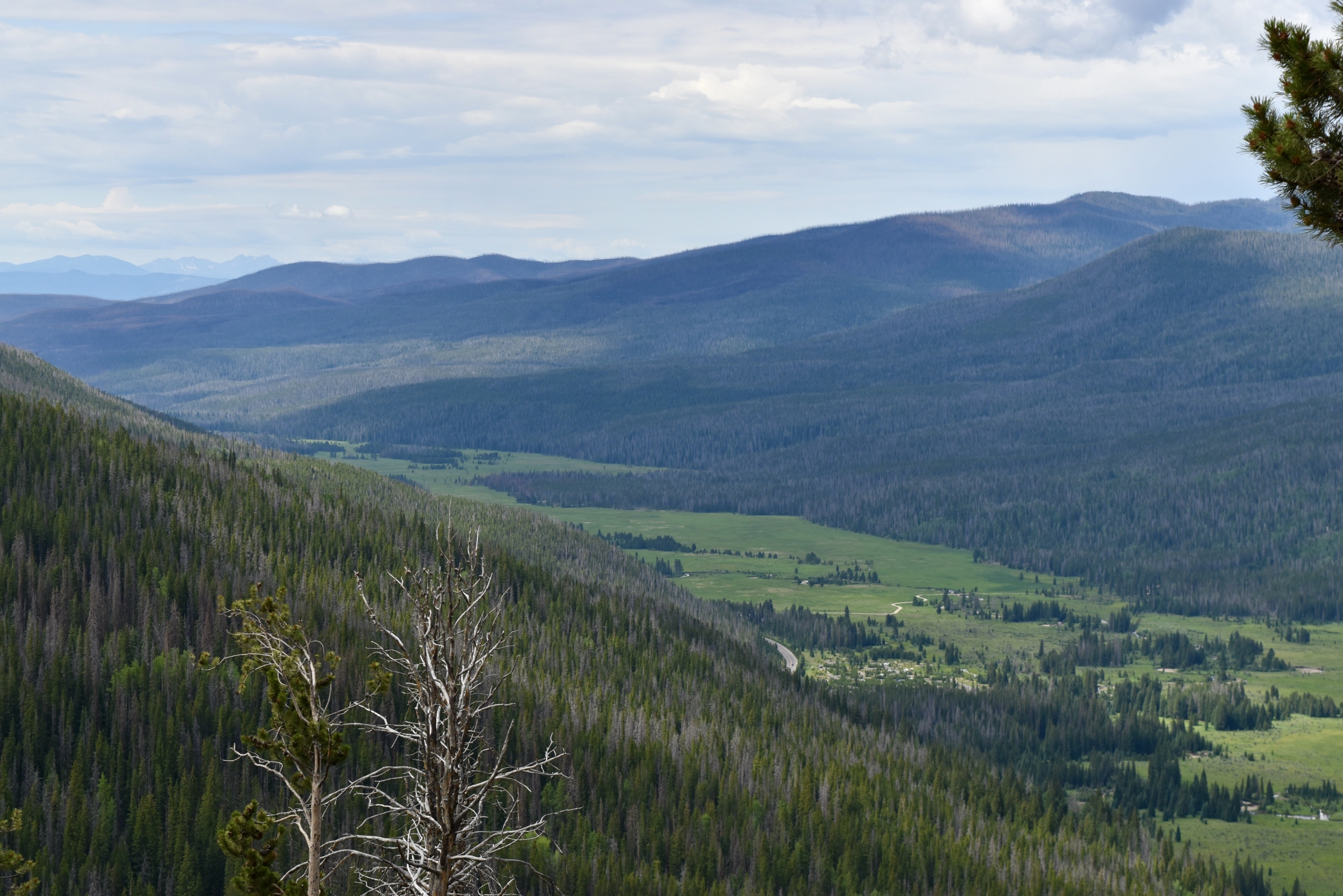- City:
- Rocky Mountain National Park, CO
- Site Type:
- Parks and Recreation, Lodges, Ranger Stations and Visitor Centers, Paths and Trails, Campgrounds and Cabins, Lakes and Ponds, Comfort Stations (Restrooms), Landscaping and Tree Planting, Shops and Auxiliary Buildings
- New Deal Agencies:
- Work Relief Programs, Conservation and Public Lands, Public Works Funding, National Park Service (NPS), Public Works Administration (PWA), Bureau of Public Roads (BPR), Civilian Conservation Corps (CCC), Civil Works Administration (CWA)
- Started:
- 1933
- Completed:
- 1942
- Quality of Information:
- Very Good
- Marked:
- Yes
- Site Survival:
- Partially Extant
Description
Rocky Mountain National Park was established in 1915 to preserve a spectacular section of the highest peaks of the Rocky Mountains. Several new additions to the park have been made over the years, until it reached its present size of 415 square miles.
The park saw considerable recreational development in the 1920s under the National Park Service (NPS), but it benefitted enormously in the 1930s from the New Deal. Most notable of the New Deal agencies was the Civilian Conservation Corps (CCC), but the \ park also gained funding from the Public Works Administration (PWA), road work by the Bureau of Public Roads (BPR) and relief work by the Civil Works Administration (CWA) in the winter of 1933-34. The National Park Service oversaw all such development.
The CCC gets the most attention for its work in the park, since it established several camps out of which several thousand young men worked on park projects from 1933 to 1942. As Julia Brock says in a report on the CCC in the park, “…the Civilian Conservation Corps did nothing less than propel Rocky Mountain National Park into a new era of tourism and recreation. Their labor not only provided long-needed maintenance for trails, roads, and buildings, it modernized Park facilities and provided new avenues of recreation for the ever-growing tourist population entering the Park.”
Or, as one ranger we talked to said, “the CCC was everywhere.”
Notably, the CCC built 100 miles of new trails, campgrounds, comfort stations (restrooms), amphitheaters, ranger stations, residences, fish ponds, and utility buildings (these CCC projects have separate entries, found in the list on the right).
In addition, the CCC enrollees built a trans-mountain telephone line (finished in 1941); new checking kiosks in 1937 for the Bear Lake, Grand Lake, Fall River, and Wild Basin entrances; and wooden directional signs for the whole of the park. (Brock, p 44).
The CCC enrollees also worked as guest guides and fire fighters, fought insect infestations, cleared timber for 2 reservoirs and did extensive landscaping around the park.
[NB: The photos in the gallery below go from west to east across the park]Source notes
https://www.nps.gov/romo/index.htm
Julia Brock, A History of the CCC in Rocky Mountain National Park. Report to the Rocky Mountain Nature Association and Rocky Mountain National Park, 2005. https://www.nps.gov/parkhistory/online_books/rmnp/ccc.pdf
Ren & Helen Davis, Our Mark on This Land: A Guide to the Legacy of the Civilian Conservation Corps in America's Parks. (McDonald & Woodward Publishing, Granville, OH, 2011.
Site originally submitted by Elizabeth Winter on August 14, 2022.
Additional contributions by Richard Walker.
At this Location:
- Staff Residential Area - Rocky Mountain National Park CO
- Moraine Park Museum - Rocky Mountain National Park CO
- Trail Ridge Road Completion - Rocky Mountain National Park CO
- Bear Lake Comfort Station - Rocky Mountain National Park CO
- Fall River Road to Trail Ridge Road Connector - Rocky Mountain National Park CO
- Fall River Entrance Ranger Station - Rocky Mountain National Park CO
- Shadow Mountain Lookout - Rocky Mountain National Park CO
- Timber Creek Campground and Comfort Stations - Rocky Mountain National Park CO
- Trails and Trail Renovation - Rocky Mountain National Park CO
- Gem Lake Trail Improvements - Rocky Mountain National Park CO
- Utility Area - Rocky Mountain National Park CO
- Moraine Park Amphitheater - Rocky Mountain National Park CO
- Trail Ridge Road Rock Walls - Rocky Mountain National Park CO
- CCC Camps (former) - Rocky Mountain National Park CO
- Trail Ridge Store - Rocky Mountain National Park CO
View all sites at Rocky Mountain National Park - CO (19 Sites)
Contribute to this Site
We welcome contributions of additional information on any New Deal site.
Submit More Information or Photographs for this New Deal Site